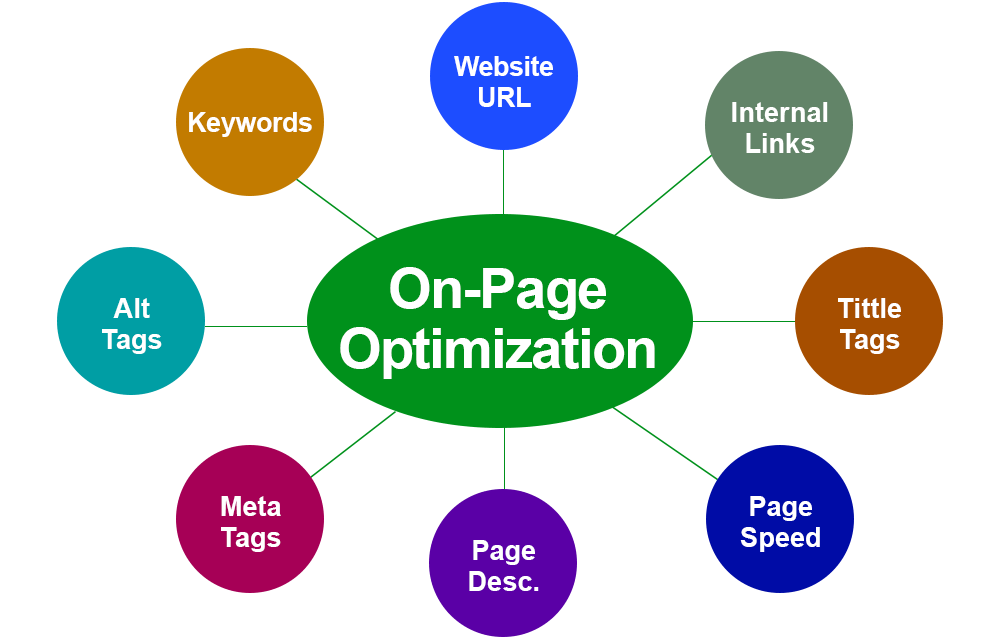Analysis and Monitoring as Prerequisites for Onpage Optimization
by Admin
Posted on 23-08-2022 11:13 AM

Effective onpage optimization requires a combination of several factors. Two key things to have in place if you intend to improve your performance in a structured way are analysis and regular monitoring.
There is little benefit in optimizing the structure or content of a website if the process isn’t geared towards achieving goals and isn’t built on a detailed assessment of the underlying issues. In extreme cases, optimization measures that aren’t based on a solid, evidence-based plan can have the opposite effect to that desired – potentially harming the stability of keyword rankings or creating a drop in conversion rates.
https://neilpatel.com/what-is-seo/
Elements of Onpage Optimization
The words used in the metadata tags, in body text and in anchor text in external and internal links all play important roles in on page search engine optimization (
seo
). The on-page optimization analysis free seo tool lets you quickly see the important seo content on your webpage url the same way a search engine spider views your data. This free seo onpage optimization tool is multiple onpage seo tools in one, helpful for reviewing the following onpage optimization information in the source code on the page:
metadata tool: displays text in title tags and meta elements
keyword density tool: reveals onpage seo keyword statistics for linked and unlinked content.

Onpage optimization is made up of different elements, which can be categorized into individual aspects. Essentially, the aim is a technically perfect website that can load quickly, and has the best, most individual content to a certain search term. The content should satisfy the needs of the user regarding their particular search query, whereas technical and performance aspects ensure that the content can be crawled and indexed optimally by the googlebot and search engine crawlers, and can be consumed by the user perfectly on any device.
3. Internal links and structure
There are two kinds of links that play a major part in seo : backlinks and internal links. Backlinks are a pillar of off-page seo, so we’ll stay away from those for now. Internal links, however, are delegated to on-page seo. Internal links are links included in your own content leading to other pages on your website. And like most things seo-related, internal linking requires its very own strategy. As you create yours, try to break down your structure into different levels: category level – categories and subcategories should link to each other, and a link to the related category should be included on each page or post.
We’ve talked a lot about on-page seo, but there’s also something known as off-page seo. The difference, as you could probably tell by the names, is where it happens. On-page seo is everything you can do internally to boost your rankings, including keyword optimization, meta descriptions, title tags, alt text, and website structure. Off-page seo is all the things that happen externally that impact your site’s rankings. This includes backlinks, e-a-t, local seo, social media mentions, and pay-per-click. Obviously, you have a lot more control over your on-page seo, but it’s important to keep off-page seo in mind as well – you need both to get where you want to go.
Internal linking of your articles is very important because it creates a better structure for your blog and provokes the readers to click on those links to read other articles on the blog as well. It does help to keep your site’s overall bounce rate lower which is good for seo. When it comes to interlinking, wikipedia is the best example. Start doing it, and you will gradually learn the right way to interlink your blog posts.
Linking internally to other pages on your website is useful to visitors and it is also useful to search engines. Here’s an internal link to another blog post on our site that talks more about internal linking. Very meta. When adding internal links, make sure to have relevant anchor text. Anchor text is the clickable text in a hyperlink (usually indicated by blue font color and underline). To optimize your anchor text, make sure the selected word or phrase is relevant to the page you’re linking to. On-page seo ensures that your site can be read by both potential customers and search engine robots.